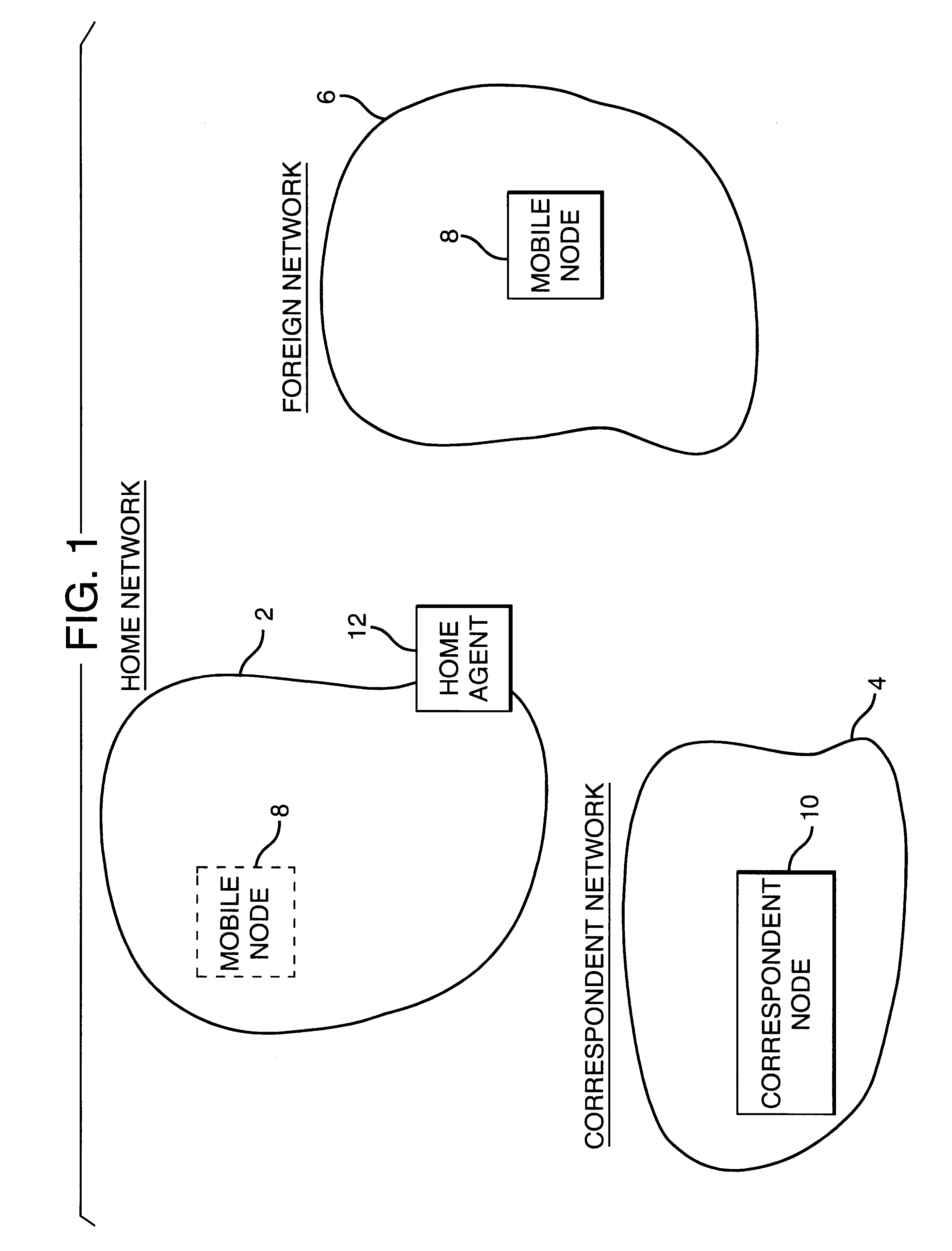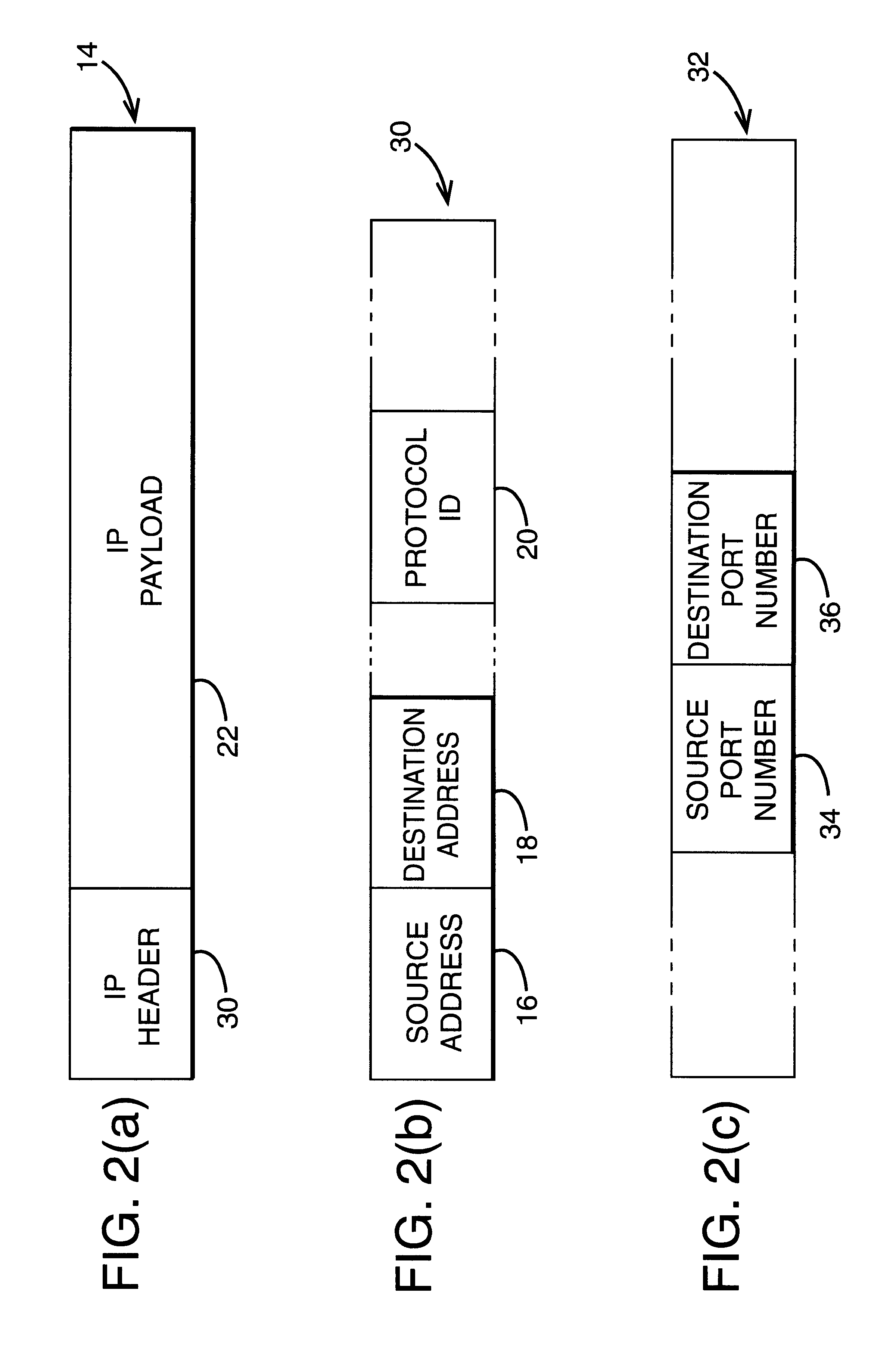Non-encapsulation mobile IP
a mobile ip and non-encapsulation technology, applied in the field of packets, can solve the problems of inability to support the quality of service provisions of the length of the repackaged ip packet is longer than the original ip packet, and the source originating the ip packet cannot provide identification information, etc., to achieve the effect of reducing the length of the new ip packet, simplifying and shortening the processing overhead, and reducing the length of the i
- Summary
- Abstract
- Description
- Claims
- Application Information
AI Technical Summary
Benefits of technology
Problems solved by technology
Method used
Image
Examples
Embodiment Construction
Referring to FIG. 1 there is shown a typical network set-up. A mobile node MN 8 to which an IP packet is to be sent is normally located in a home network 2. The mobile node MN 8 normally resides in the home network 2 at a particular address. This address is not necessarily a static IP address: the mobile node may be located at any physical point in the network, but a particular IP address is associated with the mobile node itself (rather than the physical point of connection). The home network may physically span a small office environment, or may span a number of countries.
The mobile node MN 8 may be connected to the home network 2 by a wireless LAN, infrared link, wireless telephone link or via a direct Ethernet or token ring network hook-up. The term ‘mobile node’ does not imply that the node is connected to the network via a wireless link: rather it implies that the mobile node may move outside the home network 2 into a foreign network such as the foreign network 6 of FIG. 1, as...
PUM
 Login to View More
Login to View More Abstract
Description
Claims
Application Information
 Login to View More
Login to View More - R&D
- Intellectual Property
- Life Sciences
- Materials
- Tech Scout
- Unparalleled Data Quality
- Higher Quality Content
- 60% Fewer Hallucinations
Browse by: Latest US Patents, China's latest patents, Technical Efficacy Thesaurus, Application Domain, Technology Topic, Popular Technical Reports.
© 2025 PatSnap. All rights reserved.Legal|Privacy policy|Modern Slavery Act Transparency Statement|Sitemap|About US| Contact US: help@patsnap.com



